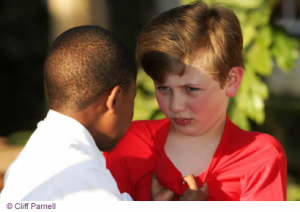Published: September 21, 2010

Image: University of Alabama
Young victims of electronic or cyber bullying — which occurs online or by cell phone — are more likely to suffer from depression than their tormentors are, a new study finds.
Traditional bullying, the kind that occurs in the school building or face-to-face, is different. Victims and bully-victims — those who both dish it out and take it — are more likely to suffer from depression than are those who are bullies, but not victims. [continue reading…]

Image credit: iStockphoto
hildren and adolescents who lack social problem-solving skills are more at risk of becoming bullies, victims or both than those who don’t have these difficulties, says new research published by the American Psychological Association. But those who are also having academic troubles are even likelier to become bullies.
[continue reading…]
Published: March 10, 2010

Image: University of Alabama
A new national study by Iowa State researchers Warren Blumenfeld and Robyn Cooper has found that one out of every two lesbian, gay, bisexual, transgender (LGBT) and allied youths are regular victims of “cyberbullying,” which causes psychological and emotional distress to victims — producing thoughts of suicide in some who are repeatedly victimized. [continue reading…]
Published: February 23, 2010

Image: University of Alabama
round 10 percent of all adolescents in grades 7-9 are victims of internet bullying.
‘This type of bullying can be more serious than conventional bullying. At least with conventional bullying the victim is left alone on evenings and weekends’, says Ann Frisén, Professor of Psychology at the University of Gothenburg.
‘Victims of internet bullying – or cyberbullying – have no refuge. Victims may be harassed continuously via SMS and websites, and the information spreads very quickly and may be difficult to remove. In addition, it is often difficult to identify the perpetrator.’ Ann Frisén’s research concerns body image, identity development and different types of bullying among children and adolescents. She is also part of an EU network of researchers studying cyberbullying and is since 1 January the national coordinator of this type of research. [continue reading…]


